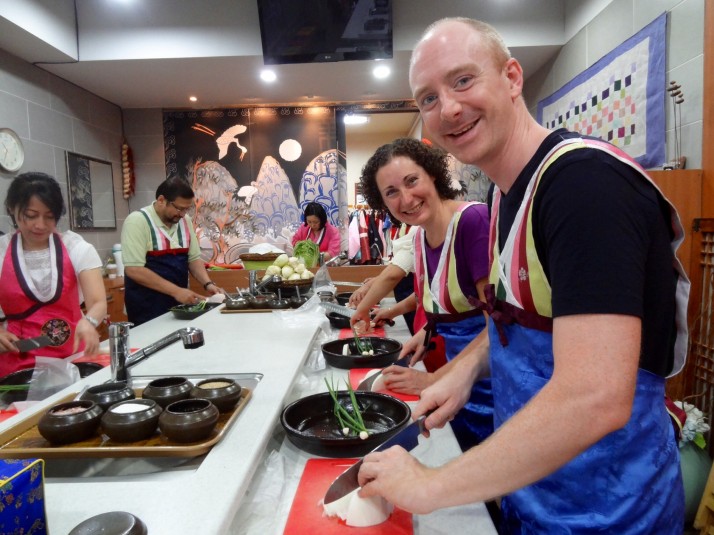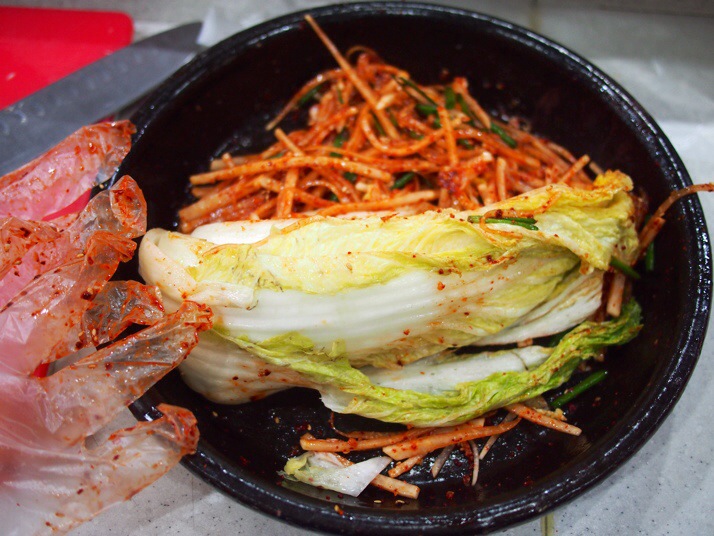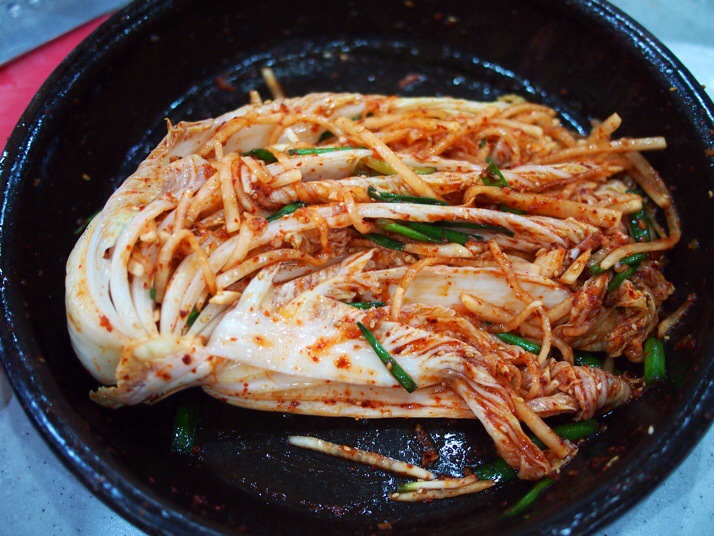Kimchi, or spicy fermented cabbage, is the national food of South Korea and a small dish appears alongside pretty much every meal served in the country, even breakfast! I’m pretty sure that there are as many variations on the recipe as there are Korean grandmas but the class we took at the Seoul Kimchi Academy House hopefully gives us a good base to work from. For me, the class was a little fast paced as we barely had time to finish one step before the instructor was talking us through the next one, but the ladies running it were friendly and it was a fun experience.
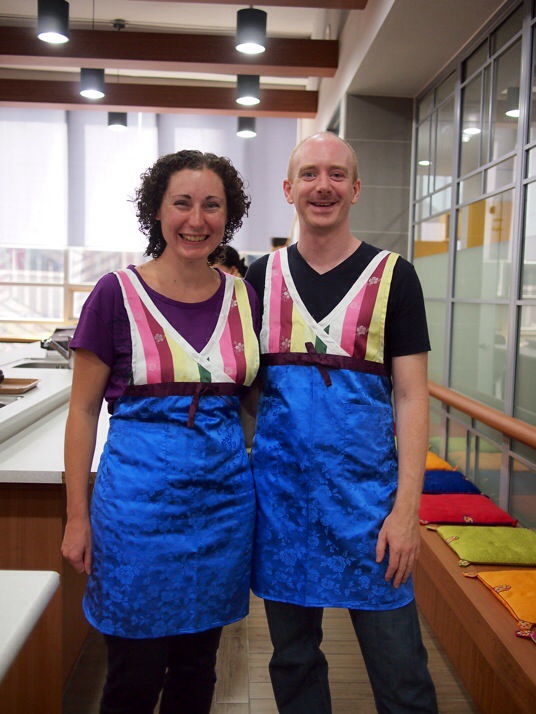 In Korean aprons ready to start
In Korean aprons ready to start
Step 1 – prepare the cabbage
Kimchi is usually made from Napa cabbage, also called Chinese cabbage. Depending on their size, the cabbages should be halved or quartered lengthwise so that the leaves are still attached to the core and then salt should be rubbed between each layer of leaves before setting the cabbages aside, covered with water, in a bowl or bucket for around 7 hours in the summer, or up to one day in the winter. Once they’ve given up some of their liquid and the leaves are limp, they need to be rinsed thoroughly three times in fresh water before being gently squeezed to get rid of any excess liquid.
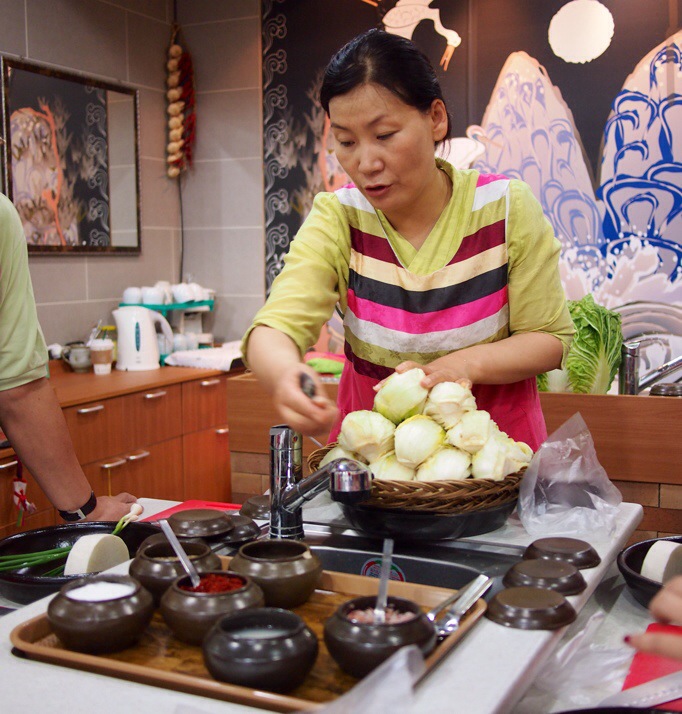 Our instructor with the pre-prepared cabbage quarters
Our instructor with the pre-prepared cabbage quarters
Step 2 – prepare the rest of the vegetables
Obviously we didn’t have enough time in the class to do step 1 so we skipped ahead to the second step, preparing the rest of the vegetables. To make 1kg kimchi you will need one quarter large Napa cabbage, a good sized chunk of daikon radish, 3 spring onions, and 2 of what I think were garlic chives.
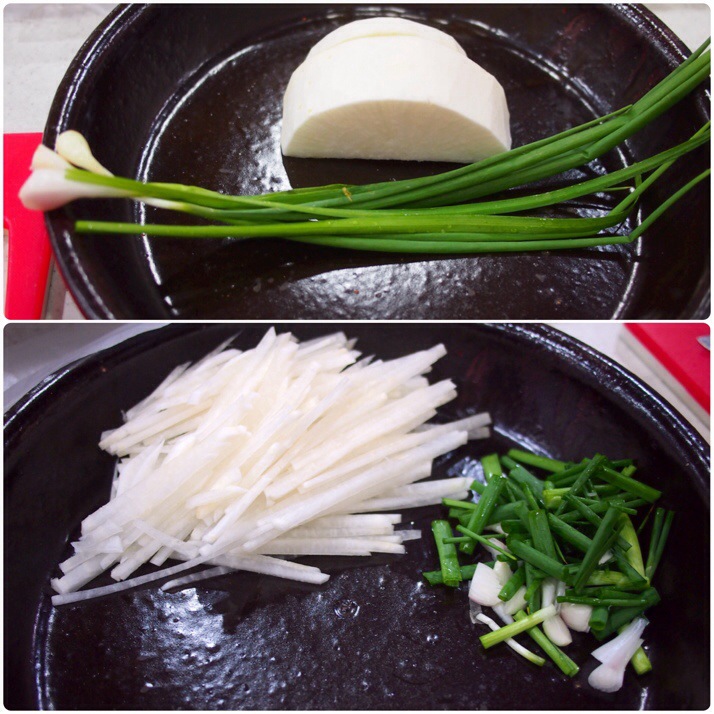 A big chunk of radish and some spring onions, before and after
A big chunk of radish and some spring onions, before and after
Step 3 – measure the spices and mix
Add the following to the prepared radish and onion:
- 1tsp garlic and ginger paste (ratio of 1:5 ginger to garlic)
- 1tsp fish sauce
- 1tsp salted (not dried) shrimps
- 1tsp sugar
- 1tsp sesame seeds
- 1tsp sticky rice paste (use a rice flour and water paste or cook rice in too much water and liquidise)
- 3tsp red chilli flakes
Mix everything thoroughly with your hands making sure to wear gloves (especially if you use contact lenses!).
Step 4 – add the cabbage
Add the cabbage quarter to the bowl and work the radish and spice paste between the leaves taking care to make sure all the surfaces are well coated.
To store the kimchi, our instructor showed us how to take the cabbage quarter in our palm with the two outer leaves hanging down, twist them under and around to make a tight bundle, and stuff any loose radish pieces into the hole that this creates.
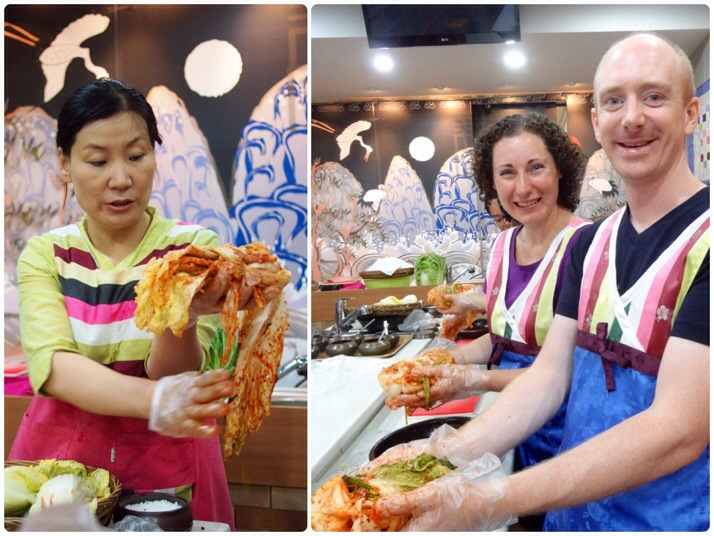 Kimchi bundles ready for storage
Kimchi bundles ready for storage
Step 5 – ferment
Put your kimchi into a suitable container and leave to ferment for at least a week. Some Koreans like their kimchi really sour and might keep it for up to one year before using! You can also use it as an ingredient to make kimchi soups and stews or even pancakes.
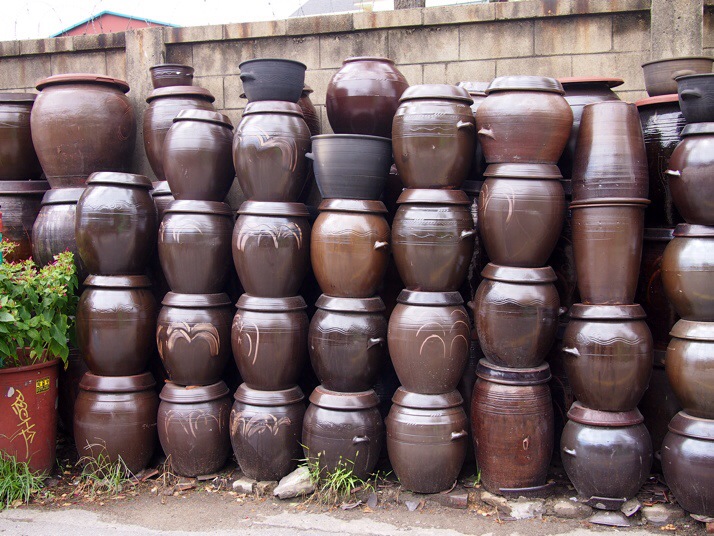 Traditionally large pots are used to store kimchi, such as these which were for sale at the end of our street
Traditionally large pots are used to store kimchi, such as these which were for sale at the end of our street
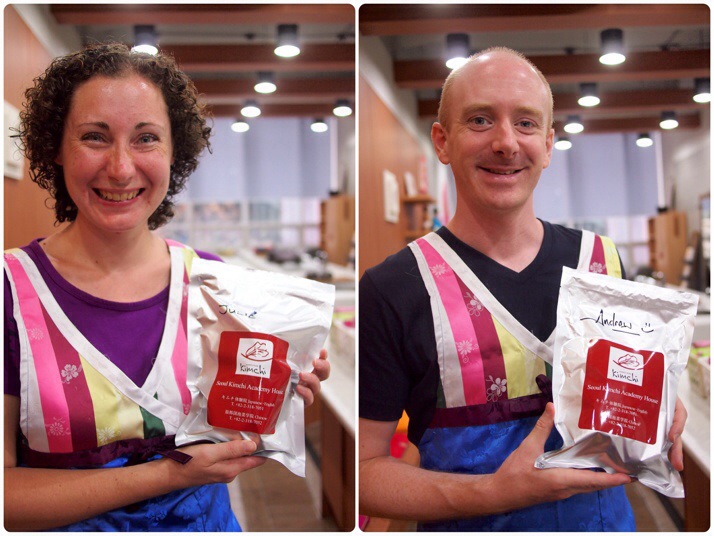 Ours was fastened into a plastic bag, squeezed to make it as airtight as possible, and then sealed into these foil bags for easier transportation
Ours was fastened into a plastic bag, squeezed to make it as airtight as possible, and then sealed into these foil bags for easier transportation
We’re looking forward to opening the packets up for a taste test soon!

 two year trip
two year trip